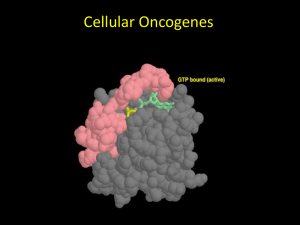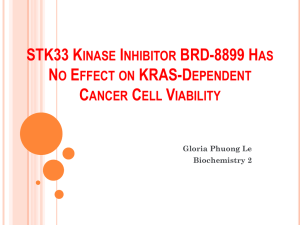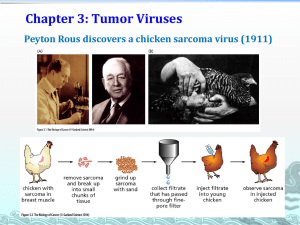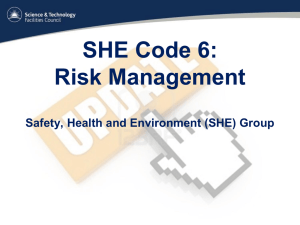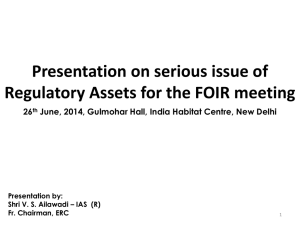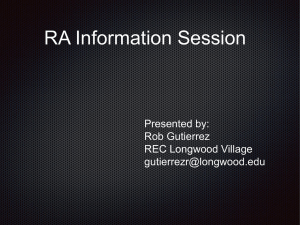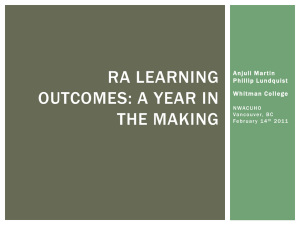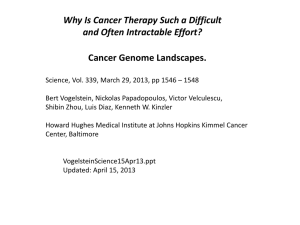oncogene
advertisement
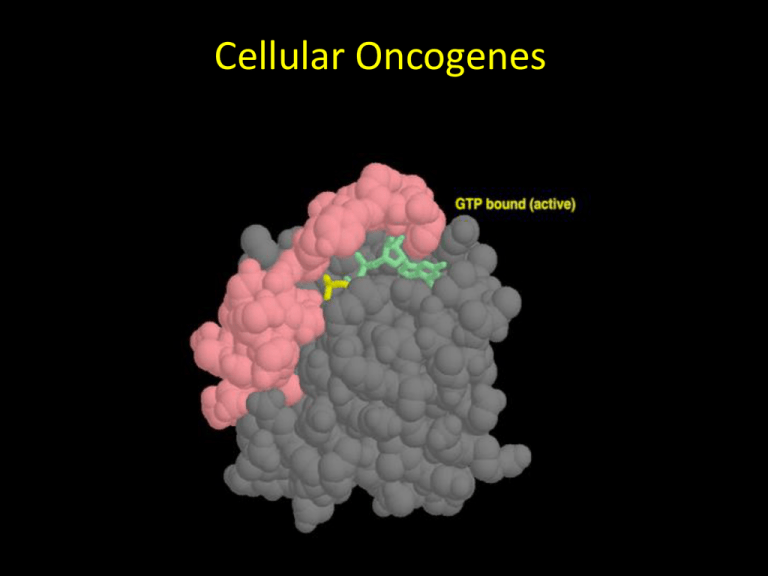
Cellular Oncogenes We made it to the 70s Viral oncogenes paved the way c-src proto-oncogene v-src oncogene Viral oncogenes paved the way c-src proto-oncogene v-src oncogene The concept: -Viruses kidnap a normal proto-oncogene -During the “kidnapping”, the mutated proto-oncogene became an oncogene -A new viral infection inserted an oncogene into the recipient, leading to cancer However…. At the time, there were no known viral tumors in humans We ultimately want to know the cause of human diseases like colon cancer, rather than curing chicken sarcomas http://www.clevelandclinic.org/registries/inherited/fap.htm One oncogene mutated in the progression to malignancy is K-ras Lodish et al. Fig. 24-6 Onto the stage stepped a bright and ambitious young assistant professor with a crazy idea Bob Weinberg But how can we identify oncogenes that are not viral oncogenes? But how can we find oncogenes that are not viral oncogenes? Add DNA from carcinogen-treated cell? First you need a way to get DNA into cells How would you do that? DNA can be “transfected” into cells using Calcium Phosphate As you know, Oncogenes relieve contact inhibition. This can be visualized in culture by “focus formation” Transfect with oncogene J Biol Chem 2002 277:10813-23 Fiordalisi et al. J Virol 2000 74:1008-13 Yoshioka et al. One can then test if the cells induce tumors But it’s a crazy idea 1. you need to find the right needle in a very large haystack 2.What if you need to find two or more needles?? Chiaho Shih Bob Weinberg Maybe it wasn’t So crazy after all! Soon everybody was trying it! Chiaho Shih Bob Weinberg DNA from chemically treated mouse cells can transform normal mouse cells a focus after transfection cells from the focus cells near the focus Without a virus: cells can be transformed It’s time to move on- the 80s Could this work for human tumors? Transfect DNA from human cancer cell lines Human Cancer Cell Line Chiaho Shih Bob Weinberg Human Cancer Cell Line Somewhere here, among the normal mouse genes, we have a human oncogene Low transformation rates suggest that we are dealing with a single oncogene How to find a needle in a haystack Figure 4.8 The Biology of Cancer (© Garland Science 2007) How to find a needle in a haystack? Generate a bacteriophage genomic library Searching for the one human gene among many mouse genes Lodish et al. Fig. 24-4 The Race is ON Wigler lab December 1981 Barbacid lab Weinberg lab An Oncogene is Cloned From a Human Tumor !! But what does it encode? The cloned gene is ~25,000 bp In 1981 there was no way to sequence 25 kilobases The cloned gene is ~25,000 bp In 1981 there was no way to sequence 25 kilobases Let’s try a long-shot shortcut--what if the cellular oncogene is one of the known viral oncogenes? Its very unlikely - 14 v-oncogenes, ~30,000 human genes Bob Weinberg Luis Parada Use Southern blot analysis to look for one human gene in the otherwise mouse genome What probe should we use ? human cells mouse cells Just go through the viral oncogenes one by one human RAS mouse RAS Der et al. PNAS 82 Channing Der, now at UNC human cells mouse cells The transforming oncogene is Ras Cellular oncogenes = Viral oncogenes Mouse cells transformed by a human oncogene human RAS mouse RAS Der et al. PNAS 82 Channing Der, UNC c-ras v-ras (viral) (cellular ) Proto-oncogene Oncogene Viruses Carcinogens Random mutations But what does ras do in the cell?? But what does ras do in the cell?? What do we want to know? But what does ras do in the cell?? Where does it do its work? Ras is postranslationally modified by addition of a lipid --where will that put it? Lipid modification targets Ras to the plasma membrane Farnesyltransferase inhibitors offer a way of reducing Ras activity Clinicians then tried them in a variety of tumors With activated Ras involvement Tipifarnib Or Lonafarnib Examples of Phase II trials: Leukemias (esp. AML/CML): Metastatic breast cancer(with capecitabine): Pancreatic cancer (with gemcitabine): Ovarian cancer (with current 2 drug combo): Neuroblastoma and Small cell lung cancer (with Taxol): Sadly, it was largely an epic fail Tipifarnib Or Lonafarnib Examples of Phase II trials: Leukemias (esp. AML/CML)May have some efficacy Metastatic breast cancer(with capecitabine): no significant improvement Pancreatic cancer (with gemcitabine): no improvement Ovarian cancer (with current 2 drug combo): no effect Neuroblastoma and Small cell lung cancer (with Taxol): Discontinued. What else could we ask about Ras? Scientists found Ras binds GTP Is it a new type of kinase? Lodish et al. Fig. 20-5 Ras is an enzyme and hydolyzes GTP Lodish et al. Fig. 20-5 Does this remind you of another well studied signaling pathway that was one of the first identified? Lodish et al. Fig. 20-5 2012 Nobel Prize in Chemistry! Nobel Prize.org This allows Ras to act as a molecular switch Lodish et al. Fig. 20-5 The activity of Ras is regulated by GEFs and GAPs How is oncogenic ras different from the normal proto-oncogene? A new race starts How is oncogenic ras different from the normal proto-oncogene? How is oncogenic ras different from the normal proto-oncogene? Ras is a key player in >50% of human tumors! Table 4.2 The Biology of Cancer (© Garland Science 2007) A note for the future—Ras is mutated in <5% of human breast cancers—we’ll see why later Table 4.2 The Biology of Cancer (© Garland Science 2007) The G12V mutation prevents endogenous and GAP-stimulated GTPase activity Thus the Ras oncogene is constitutively active i.e. stuck in the ON state! G12V Lodish et al. Fig. 20-5 Why would constitutively active Ras lead to cancer ? How does Ras act in our body, in vivo ? From cell culture to model organisms
